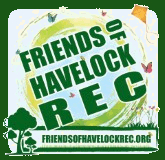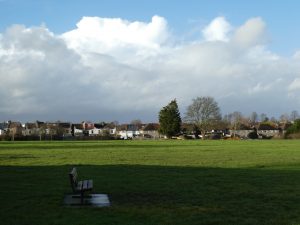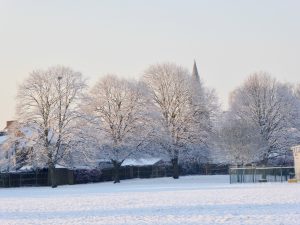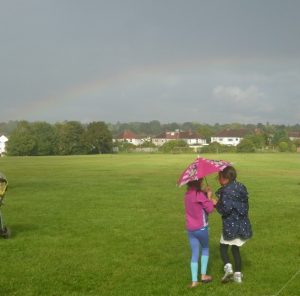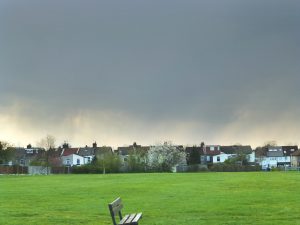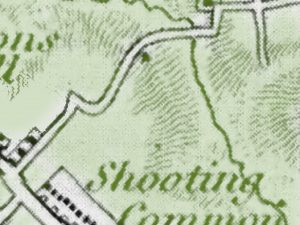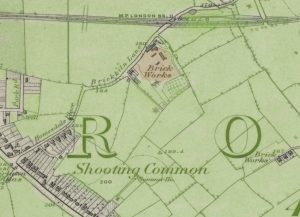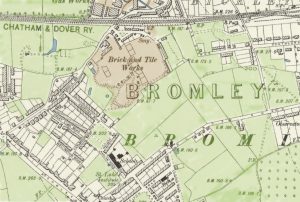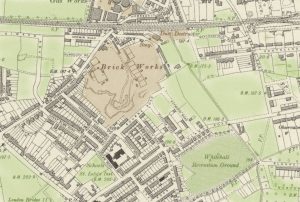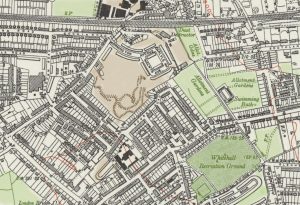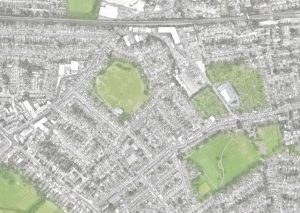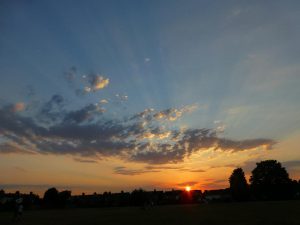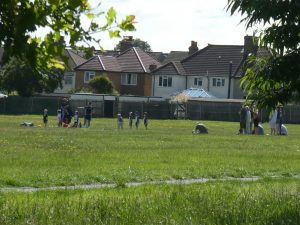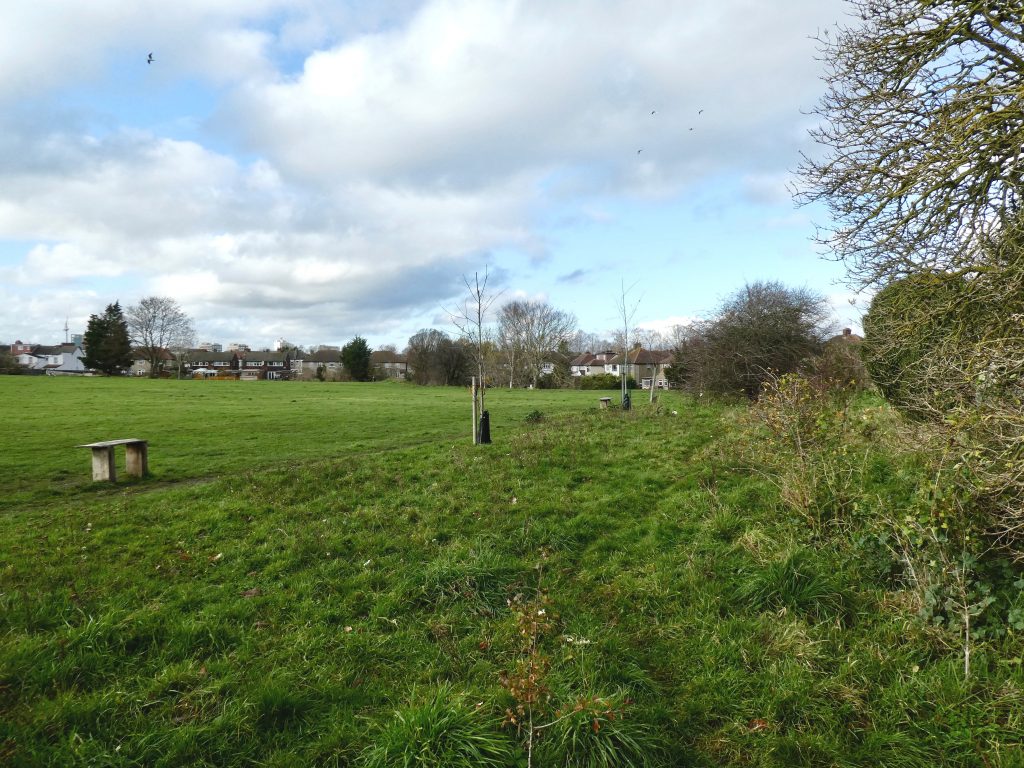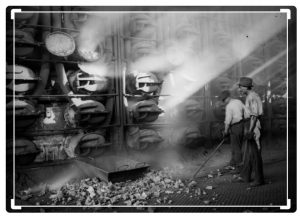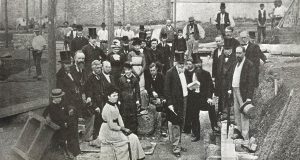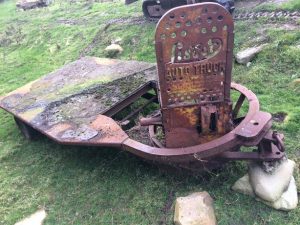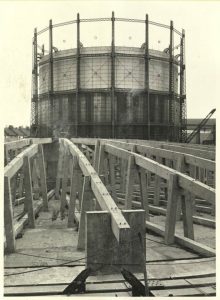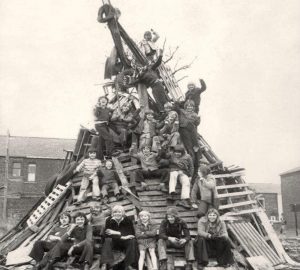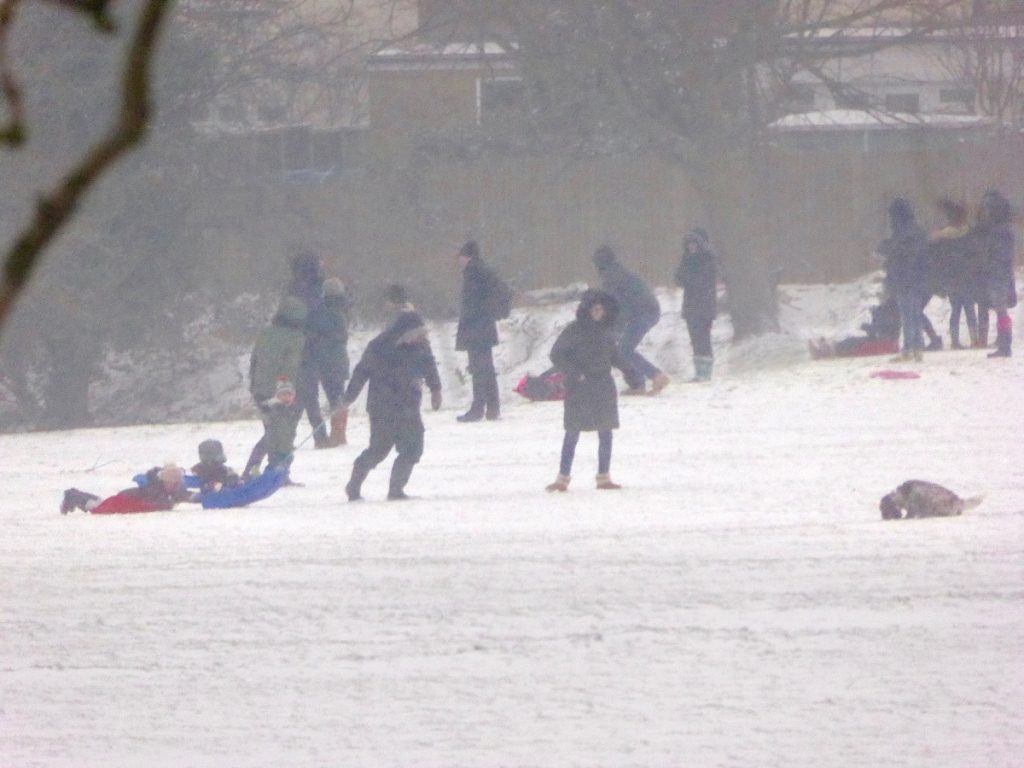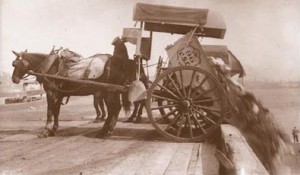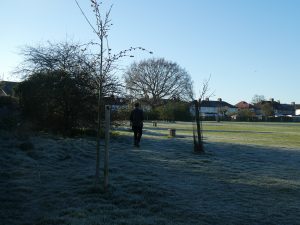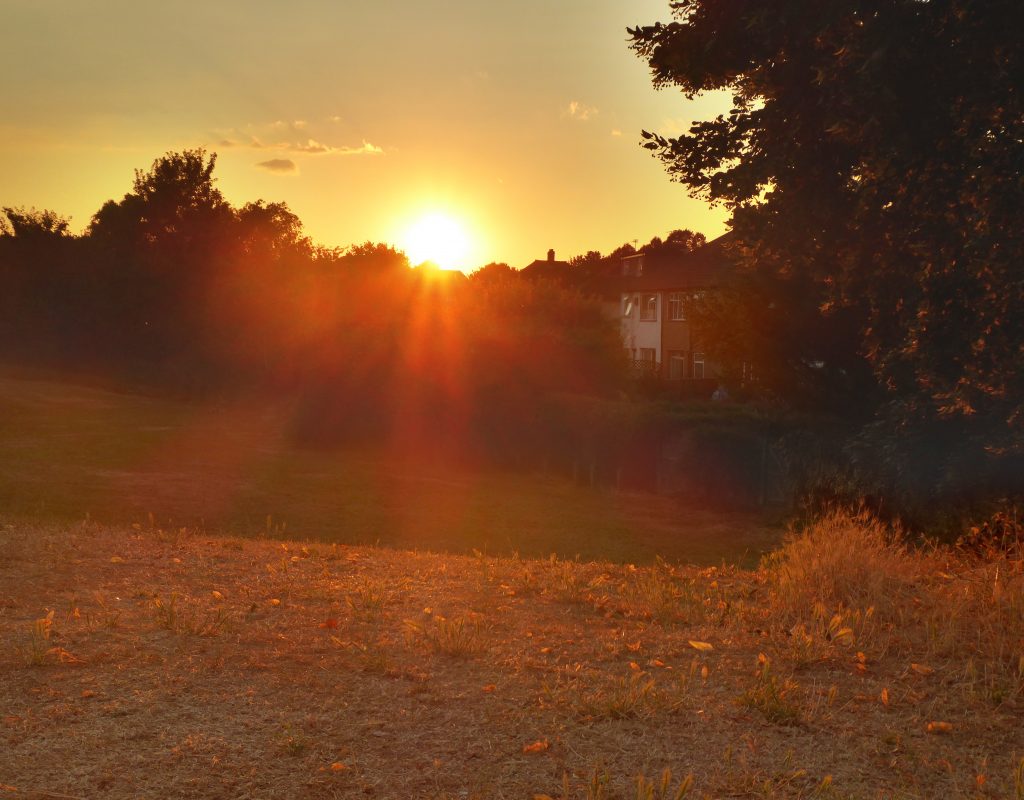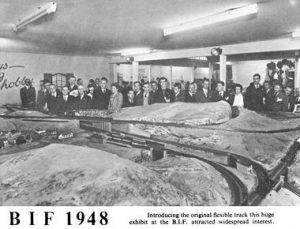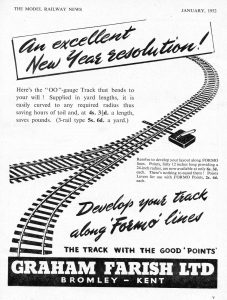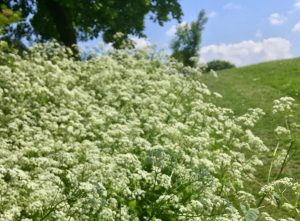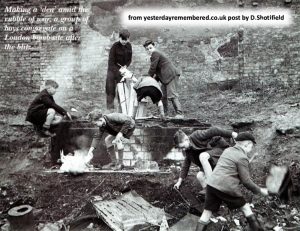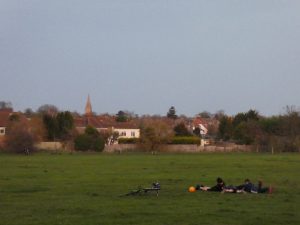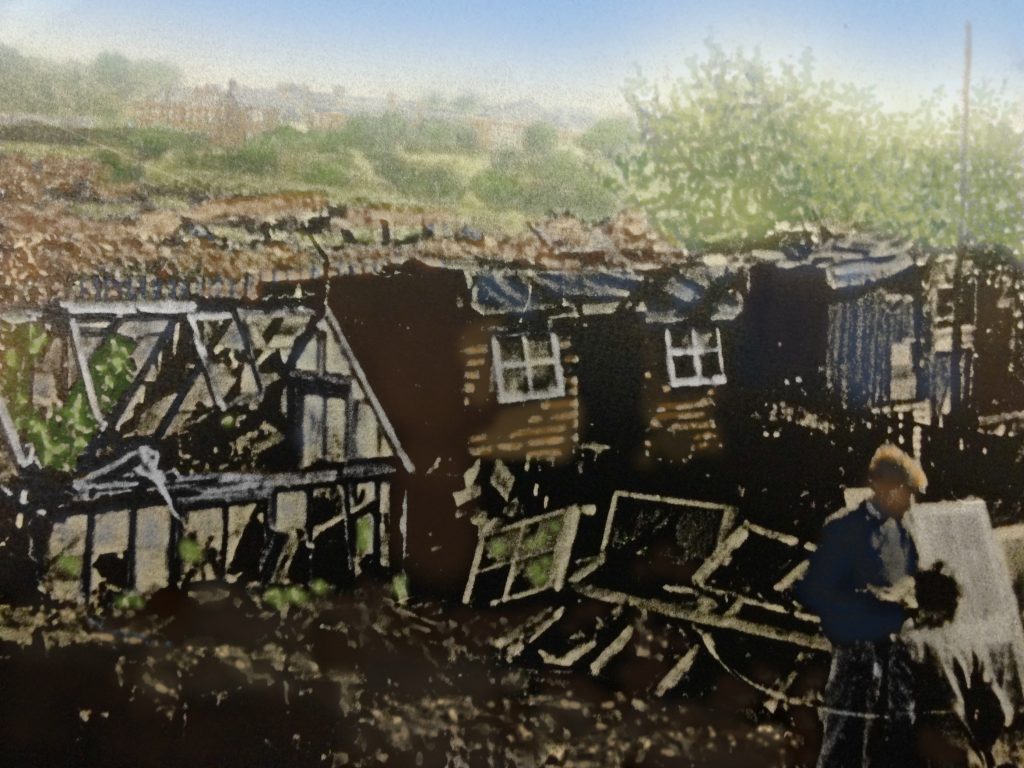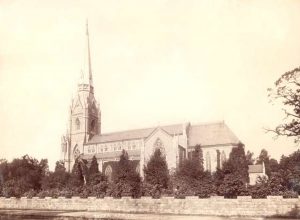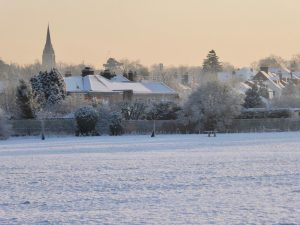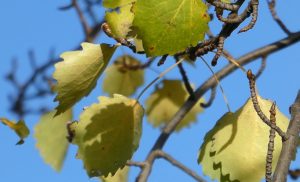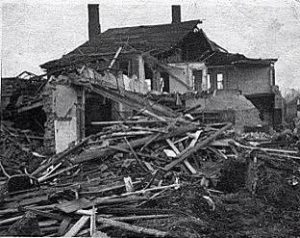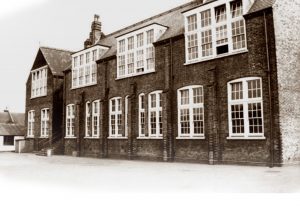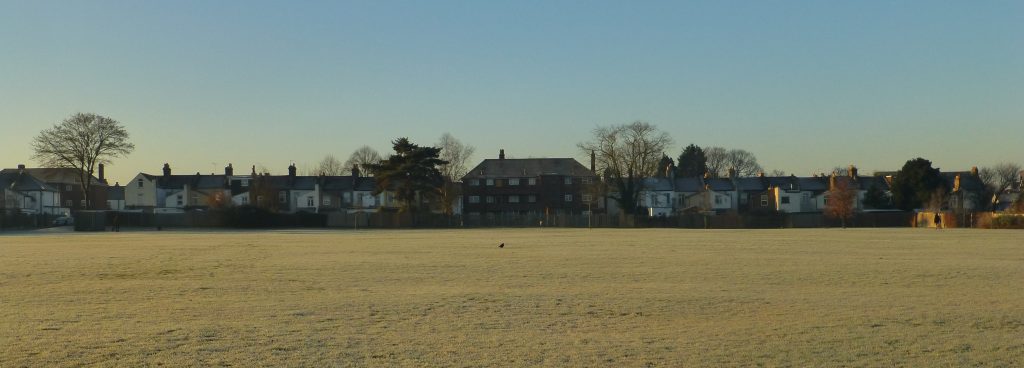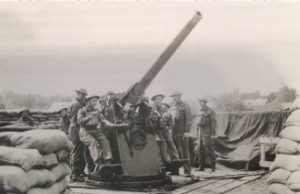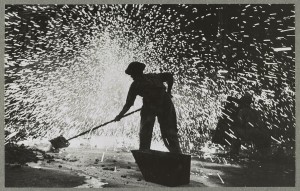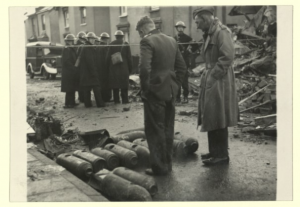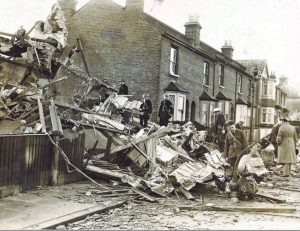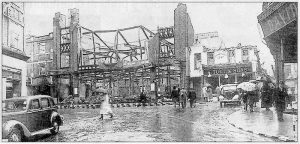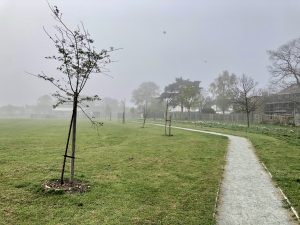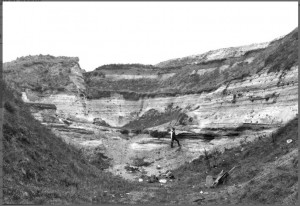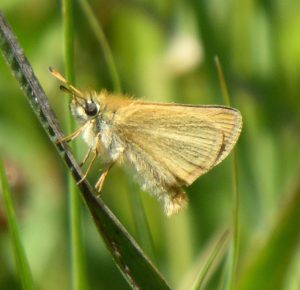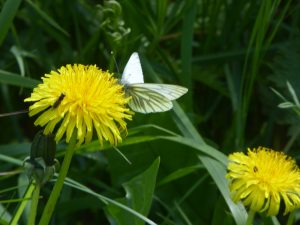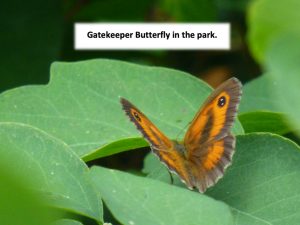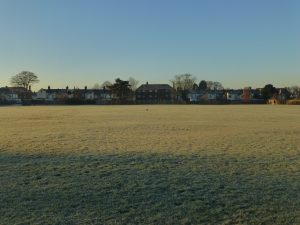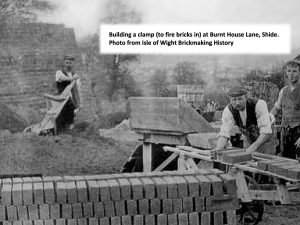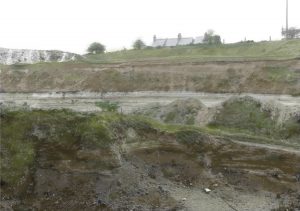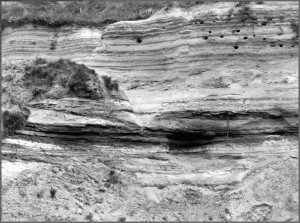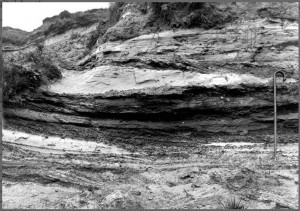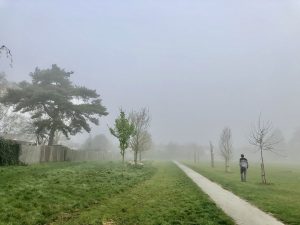At the Green lane entrance to the Park, by the Large Oak in the Neighbour’s garden.
Stop 10 – Of Podger’s Laundry, Raglan School sports day and Seagull Roost .
Previous Stop – Next Stop
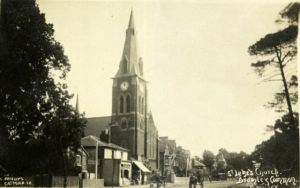
1925 St Lukes Bromley-Common thanks to Chatterton Road History Society
Narrator: Look towards the opposite side of the park, where you can see the spire of St Luke’s church, Bromley Common – behind the trees in the corner. The park is in the parish of St Luke’s.
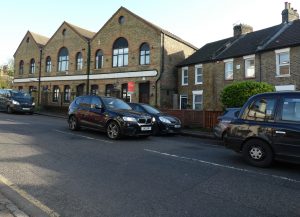
Henry Podger’s Laundry, rebuilt 1884. Phone 2020-11-07.
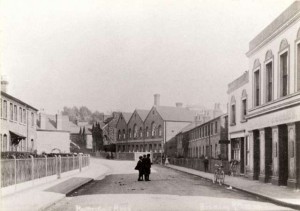
Homesdale Road in 1910, with Henry Podger’s laundry in the centre.
Narrator: On Homesdale Road, just past the Gas Works, is a brick industrial building. It is not a coincidence that this is over where the Blackbrook, or Ravensbourne West ‘river’ crosses Homesdale Road. It was built by Henry Podger, who was the son of a farmer, who, on hard times, was convicted of thieving from his employer in 1842. In Henry’s early years, he worked at Woolwich Arsenal, and then set up a laundry business here in 1864, using the stream’s water until mains water arrived.
Henry Podger is described as a real “Rags to Riches” story, and was so successful that he opened 3 shops in Bromley, and specialised in difficult items such as hat plumes and furniture, using machinery that he designed himself – including the first collar ironing machine, which was shown at the International Health Exhibition in 1884. The current building was rebuilt after a fire in 1886. The laundry employed many local people until the 1920s.
Until the 1980s, the field was used by the local School, Raglan Road Primary.
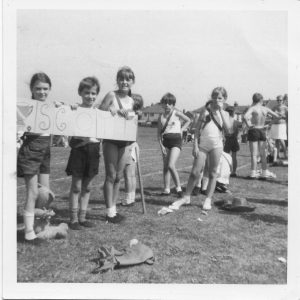
Marissa’s memory, narrated by Jo: “The brickfield was already a grassed playing field when I moved here in 1959, but the lady down the road, who had moved in 8 years earlier remembered it being grassed over. The work was done by the contractors, the Macintoshes. I was told that in the war there were two big guns (anti-aircraft) in there as it was a very big pit. And, there was half a house left (from the WW2 bombing) at number 43 (Havelock Road) with all the children playing in it. Every year at the end of the year, Raglan school would have a sports day on the brickfield, and my Maurizia was the champion running one year. At the weekend, the Raglan boys used to come and play football with the teacher. We used to go there in the evening as a family and play tennis and badminton. My Maurice would never allow us to picnic on the other side of the field, it had to be in our corner.
The Brickfield was left to the children of Raglan Road School, and the council was to look after it on their behalf.”
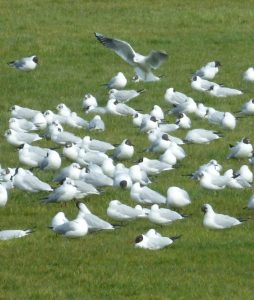
Gulls roost on Havelock Rec
Narrator: In recent years – since about 2016 – the park has been used, as a roost for the Herring gulls and Black headed gulls, who forage at the waste transfer station at Waldo Road. Before the gulls arrived, there had been a large flock of hundreds of carrion crows, who had supplemented their rubbish diet with the local song birds. As the Herring gulls have moved the crows on, song birds have recovered in the park and local gardens.
Continue along the edge of the park, round the corner, and down the side.
This part of the park is over the deepest part of the pits; the map shows 3 tiers of slopes to the bottom of the pit. Though trees have trouble growing along this side, the wildflowers do well and at the right time of year you can have yellow drifts of birds-foot trefoil or pink drifts of field bindweed.
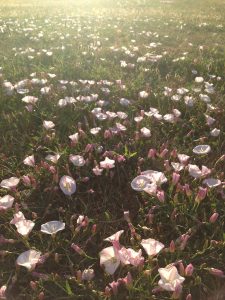
Pink field bindweed drifts on Havelock Rec
